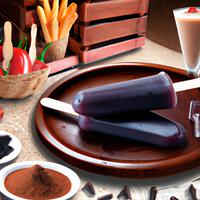
1 serving (50 grams) contains 40 calories, 0.0 grams of protein, 0.0 grams of fat, and 10.0 grams of carbohydrates.

Log this food in SnapCalorie

Nutrition Information
Calories |
189.3 | ||
|---|---|---|---|
% Daily Value* |
|||
| Total Fat | 0 g | 0% | |
| Saturated Fat | 0 g | 0% | |
| Polyunsaturated Fat | 0 g | ||
| Cholesterol | 0 mg | 0% | |
| Sodium | 23.7 mg | 1% | |
| Total Carbohydrates | 47.3 g | 17% | |
| Dietary Fiber | 0 g | 0% | |
| Sugars | 37.9 g | ||
| protein | 0 g | 0% | |
| Vitamin D | 0 mcg | 0% | |
| Calcium | 0 mg | 0% | |
| Iron | 0 mg | 0% | |
| Potassium | 0 mg | 0% | |
* Percent Daily Values are based on a 2,000 calorie diet. Your daily values may be higher or lower depending on your calorie needs.
Food Attributes
Source of Calories
About Freeze pop
Freeze pops are a popular frozen treat often enjoyed during warm weather. These icy snacks typically consist of water, sugar, fruit-flavored syrups, and artificial coloring, sealed in slim, plastic sleeves. Originating as a convenient and portable dessert, freeze pops are widely associated with American or Western summer treats, although similar frozen products can be found worldwide. They are low in fat and calories, making them appealing for those looking for a light snack, but their sugar content can be high, which may contribute to excess calorie intake if consumed in large quantities. Additionally, freeze pops often contain artificial dyes and flavorings, which might concern those seeking more natural food options. While they offer hydration due to their high water content and satisfy sweet cravings with no preparation required, moderation is key in enjoying freeze pops as part of a balanced diet.



